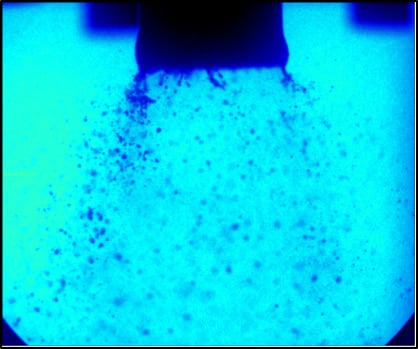Experimental Investigations of Flow Field and Atomization Field Characteristics of Pre-Filming Air-Blast Atomizers
Abstract
:1. Introduction
2. Experimental Method
2.1. Swirler Structures
2.2. Experimental System
3. Results and Discussion
3.1. The Influence of Air-Blast Atomizer Structures on Flow Field and Atomization Field
3.2. The Influence of Fuel Temperature on Flow Field and Atomization Field
3.3. The Influence of Air Mass Rate on Flow Field and Atomization Field
3.4. The Influence of Fuel Mass Rate on Flow Field and Atomization Field
4. Conclusions
- (1)
- Air-blast atomizer structures have a great difference on the flow fields and atomization fields. The venturi tube decreases the jet angle and increases the jet velocity, and the sleeve decreases the jet angle and jet velocity, especially the jet velocity. The venturi tube decreases the recirculation zone and the sleeve increases the circulation zone. The venturi tube decreases the cone angle, and the sleeve decreases the cone angle too;
- (2)
- Air-blast atomizer structures have great differences on the liquid film breakup processes. The breakup performance of Case C is better than that of Case B as there are no big droplets at the downstream, which is induced by the strong shear force of two-stage counter-rotating air. The breakup performance becomes worse when there is a sleeve, which maybe should be used in a third-stage swirler;
- (3)
- The liquid film rotates at the exit of the venturi tube, due to the tangential velocity of fuel and air, and the rotating liquid film breaks into rotating ligaments and big droplets, due to the centrifugal force, surface tension, and shear force;
- (4)
- The fuel temperature mainly effects the axial velocity at the position near the axis and swirler exit, and the maximum reflux velocity climbs with the increase of fuel temperature, which is mainly induced by the better atomization;
- (5)
- Flow field structure and atomization structure are mainly determined by the swirler structure, whereas there are seldom influences of air mass rate and fuel mass rate on them.
Author Contributions
Funding
Acknowledgments
Conflicts of Interest
Nomenclature
| PIV | Particle Imaging Velocimetry |
| PLIF | Fuel Planar Laser Induced Fluorescence |
| mf | Fuel Mass rate, (kg/h) |
| ma | Air Mass rate, (kg/h) |
| T | Fuel temperature, (°C) |
| U | Axial velocity, (m/s) |
| β | Cone angle, (°) |
References
- Lefebvre, A.H.; Ballal, D.R. Gas Turbine Combustion: Alternative Fuels and Emissions. J. Eng. Gas Turbines Power 2010, 132, 77. [Google Scholar] [CrossRef]
- Dunn-Rankin, D. Lean Combustion: Technology and Control; Academic Press: Cambridge, MA, USA, 2013. [Google Scholar]
- Lefebvre, A.H.; McDonell, V.G. Atomization and Sprays, 2nd ed.; CRC Press: Boca Raton, FL, USA, 2017. [Google Scholar]
- Lefebvre, A.H.; Ballal, D.R. Gas Turbine Combustion; CRC Press: Boca Raton, FL, USA, 2010. [Google Scholar]
- Wang, H.; McDonell, V.; Samuelsen, S. Influence of Hardware Design on the Flow Field Structures and the Patterns of Droplet Dispersion: Part I—Mean Quantities. J. Eng. Gas Turbines Power 1995, 117, 282–289. [Google Scholar] [CrossRef]
- Ateshkadi, A.; McDonell, V.; Samuelsen, G. Effect of Mixer Geometry on Fuel Spray Distribution, Emissions and Stability. In Proceedings of the AIAA Aerospace Sciences Meeting and Exhibit, Reno, NV, USA, 12–15 January 1998. [Google Scholar]
- Wang, H.; McDonell, V.; Sowa, W.A.; Samuelsen, G.S. Scaling of the Two-Phase Flow Downstream of a Gas Turbine Combustor Swirl Cup: Part I and mdash; Mean Quantities. J. Eng. Gas Turbines Power 1992, 115, V003T06A031. [Google Scholar]
- Wang, H.; McDonell, V.; Samuelsen, G. The Influence of Spray Angle on the Continuous-and Discrete-Phase Flowfield Downstream of an Engine Combustor Swirl Cup. In Proceedings of the 28th Joint Propulsion Conference and Exhibit, Nashville, TN, USA, 6–8 July 1992. [Google Scholar]
- Mongia, H.; Gore, J.; Grinstein, F.; Gutmark, E.; Jeng, S.M.; McDonell, V.; Menon, S.; Samuelsen, G.; Santavicca, D.; Santoro, R. Combustion Research Needs for Helping Development of Next-Generation Advanced Combustors. In Proceedings of the 37th Joint Propulsion Conference and Exhibit, Salt Lake City, UT, USA, 8–11 July 2001. [Google Scholar]
- Hadef, R.; Lenze, B. Effects of Co-and Counter-Swirl on the Droplet Characteristics in a Spray Flame. Chem. Eng. Process. Process Intensif. 2008, 47, 2209–2217. [Google Scholar] [CrossRef]
- Liu, C.; Liu, F.; Yang, J.; Mu, Y.; Hu, C.; Xu, G. Experimental Investigation of Spray and Combustion Performances of a Fuel-staged Low Emission Combustor Part I: Effects of Main Swirl Angle. In Proceedings of the ASME Turbo Expo 2016: Turbomachinery Technical Conference and Exposition, Seoul, Korea, 13–17 June 2016. [Google Scholar]
- Lasheras, J.C.; Villermaux, E.; Hopfinger, E.J. Break-up and Atomization of a Round Water Jet by a High-Speed Annular Air Jet. J. Fluid Mech. 1998, 357, 351–379. [Google Scholar] [CrossRef]
- Engelbert, C.; Hardalupas, Y.; Whitelaw, J.H. Breakup Phenomena in Coaxial Airblast Atomizers. Proc. Math. Phys. Sci. 1995, 451, 189–229. [Google Scholar] [CrossRef]
- Lin, S.P.; Reitz, R.D. Drop and Spray Formation from a Liquid Jet. Annu. Fluid Mech. 1998, 30, 85–105. [Google Scholar] [CrossRef]
- Zhao, H.; Liu, H.F.; Tian, X.S.; Xu, J.L.; Li, W.F.; Lin, K.F. Influence of Atomizer Exit Area Ratio on the Breakup Morphology of Coaxial Air and Round Water Jets. AIChE J. 2014, 60, 2335–2345. [Google Scholar] [CrossRef]
- Roudini, M.; Wozniak, G. Experimental Investigation of Spray Characteristics of Pre-filming Air-blast Atomizers. J. Appl. Fluid Mech. 2018, 11, 1455–1469. [Google Scholar] [CrossRef]
- Garai, A.; Pal, S.; Mondal, S.; Ghosh, S.; Sen, S.; Mukhopadhyay, A. Experimental Investigation of Spray Characteristics of Kerosene and Ethanol-Blended Kerosene Using a Gas Turbine Hybrid Atomizer. Sādhanā 2017, 42, 543–555. [Google Scholar]
- Ochowiak, M.; Matuszak, M.; Włodarczak, S.; Krupińska, A.; Markowska, M.; Gościniak, A.; Szulc, T. The Concept Design and Study of Twin-Fluid Effervescent Atomizer with Air Stone Aerator. Chem. Eng. Process. Process Intensif. 2018, 124, 24–28. [Google Scholar] [CrossRef]

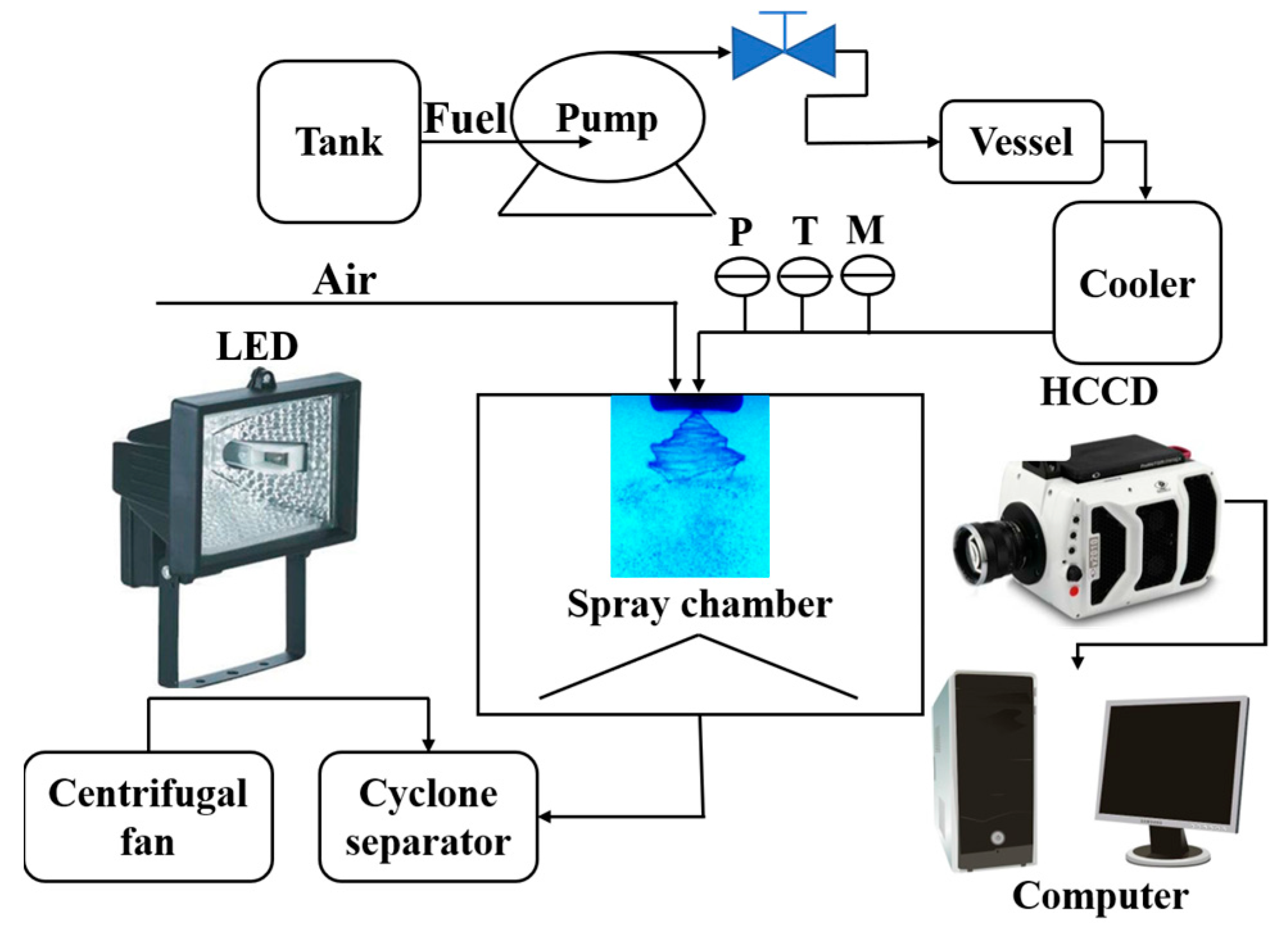
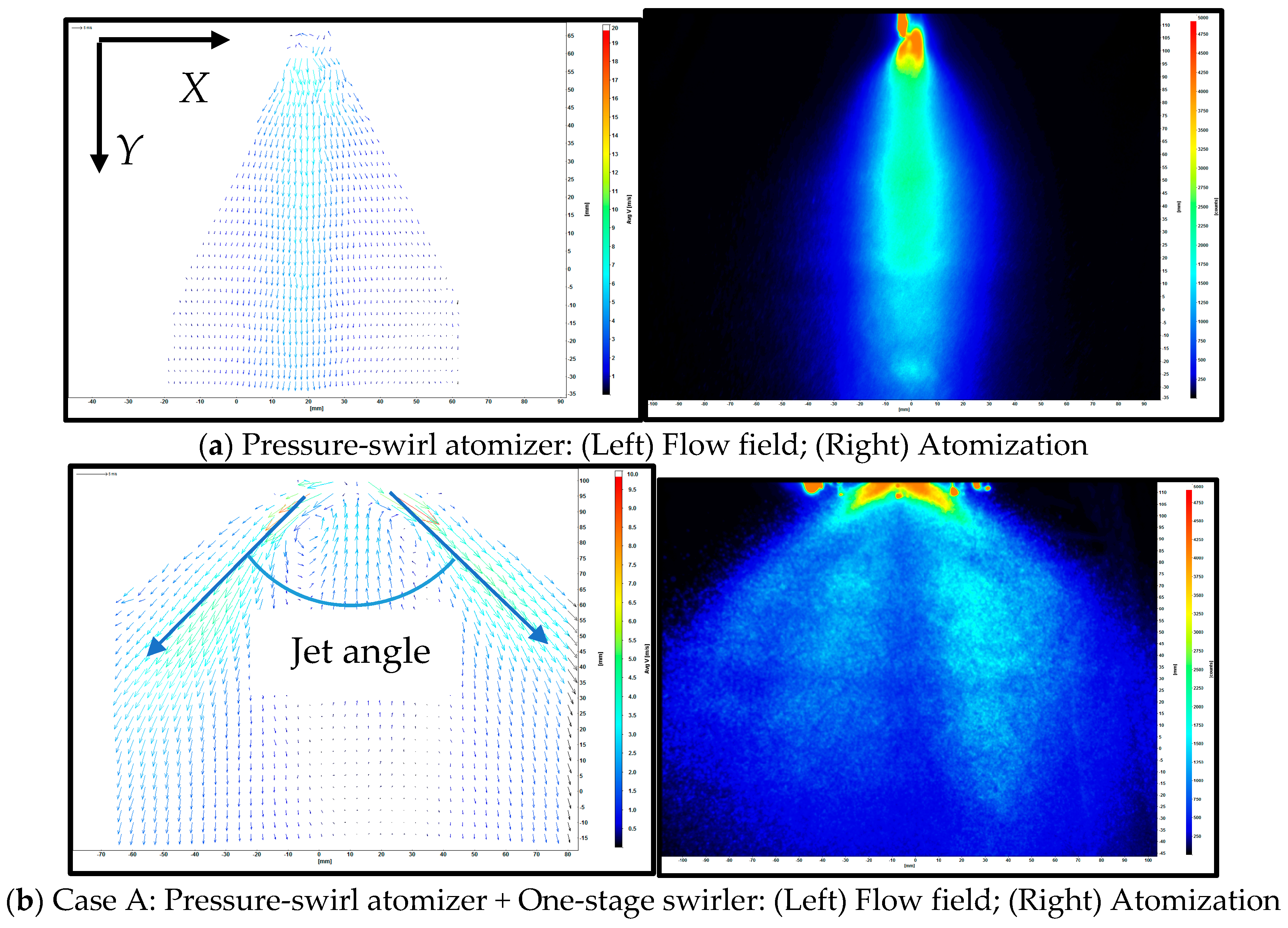

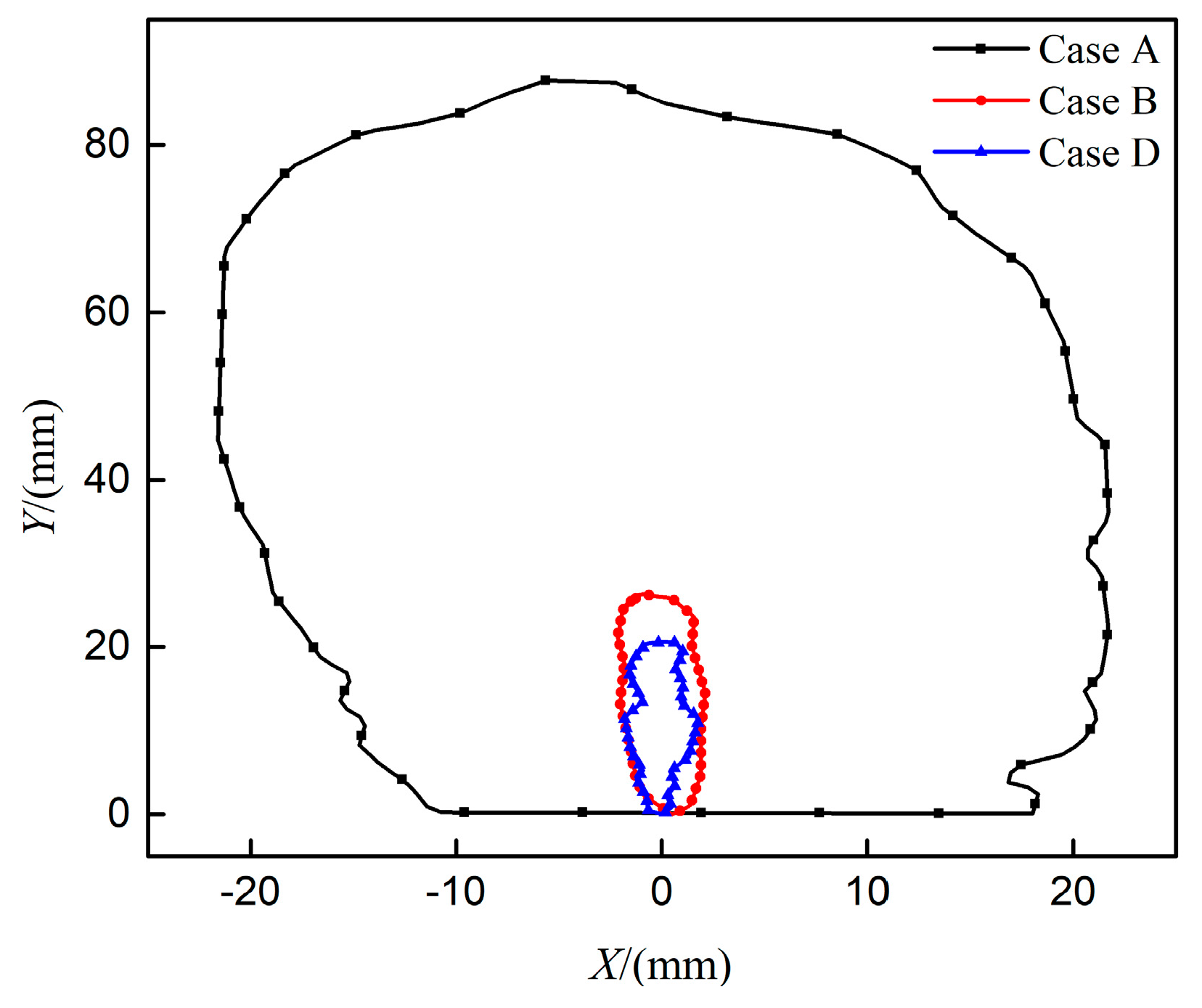

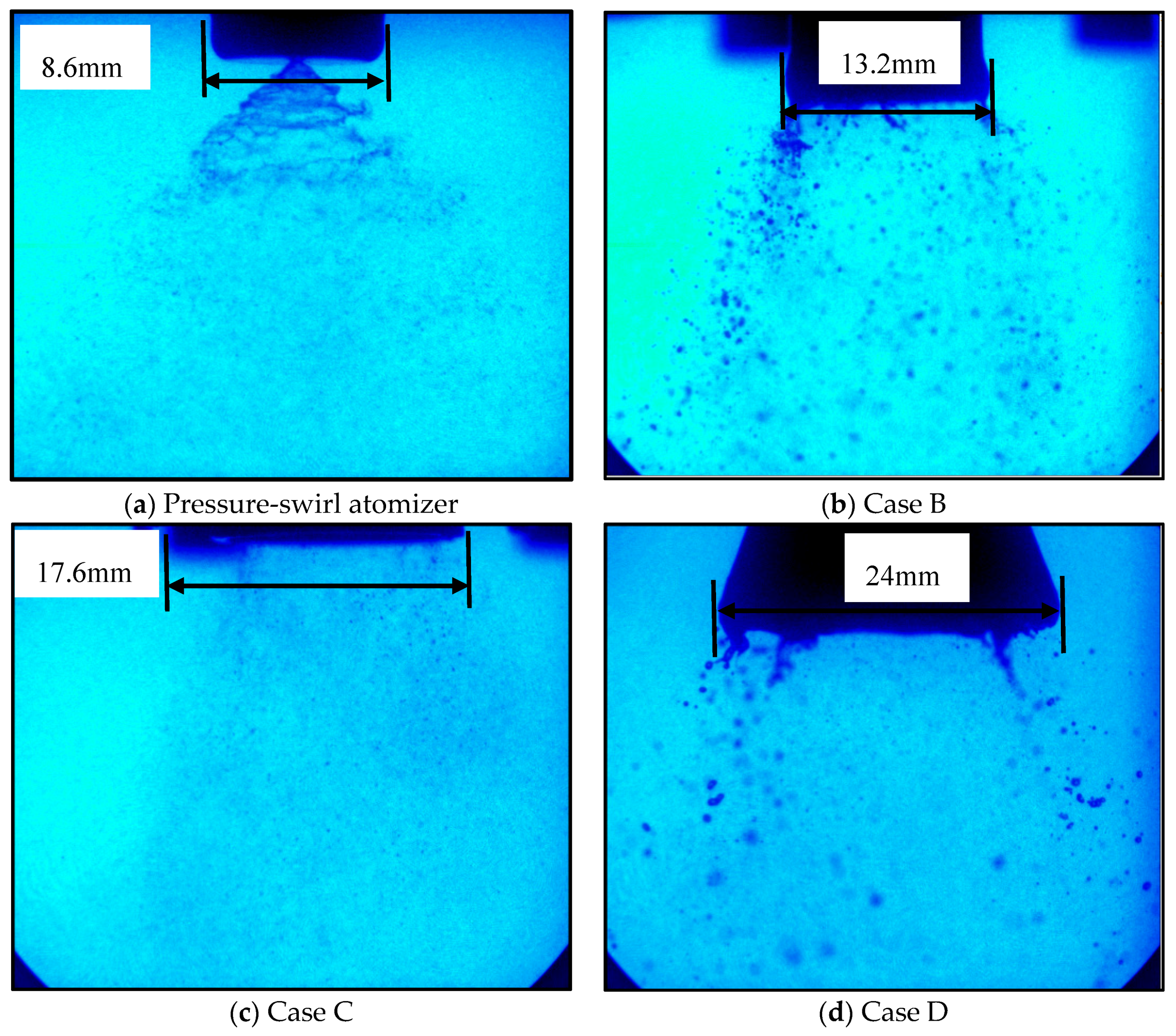


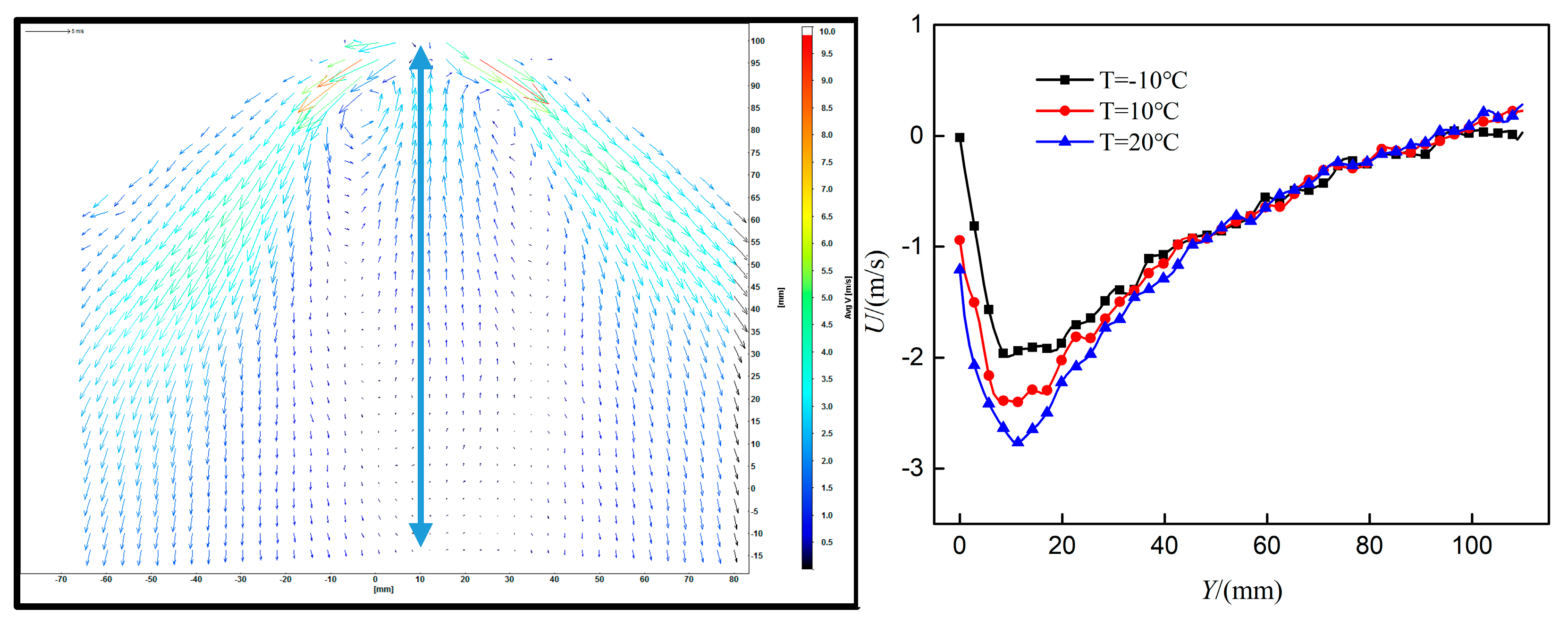


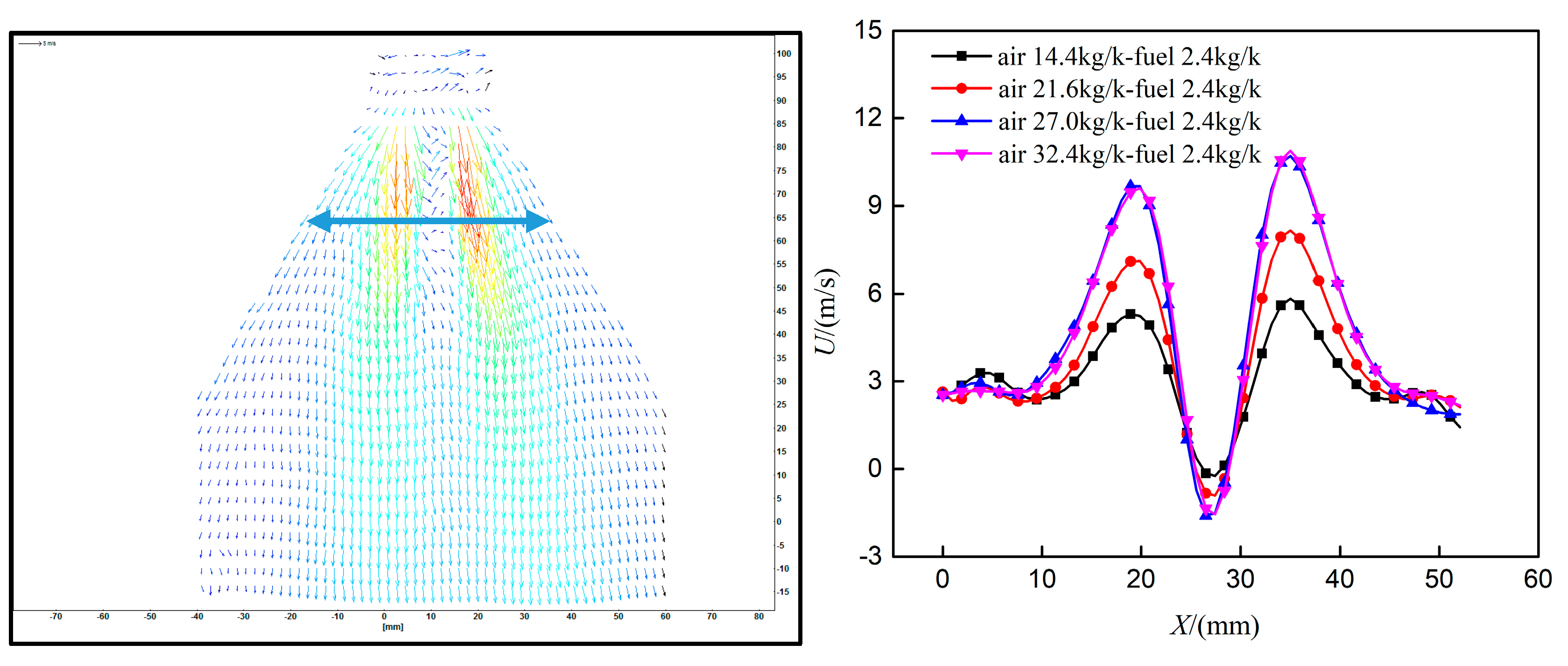

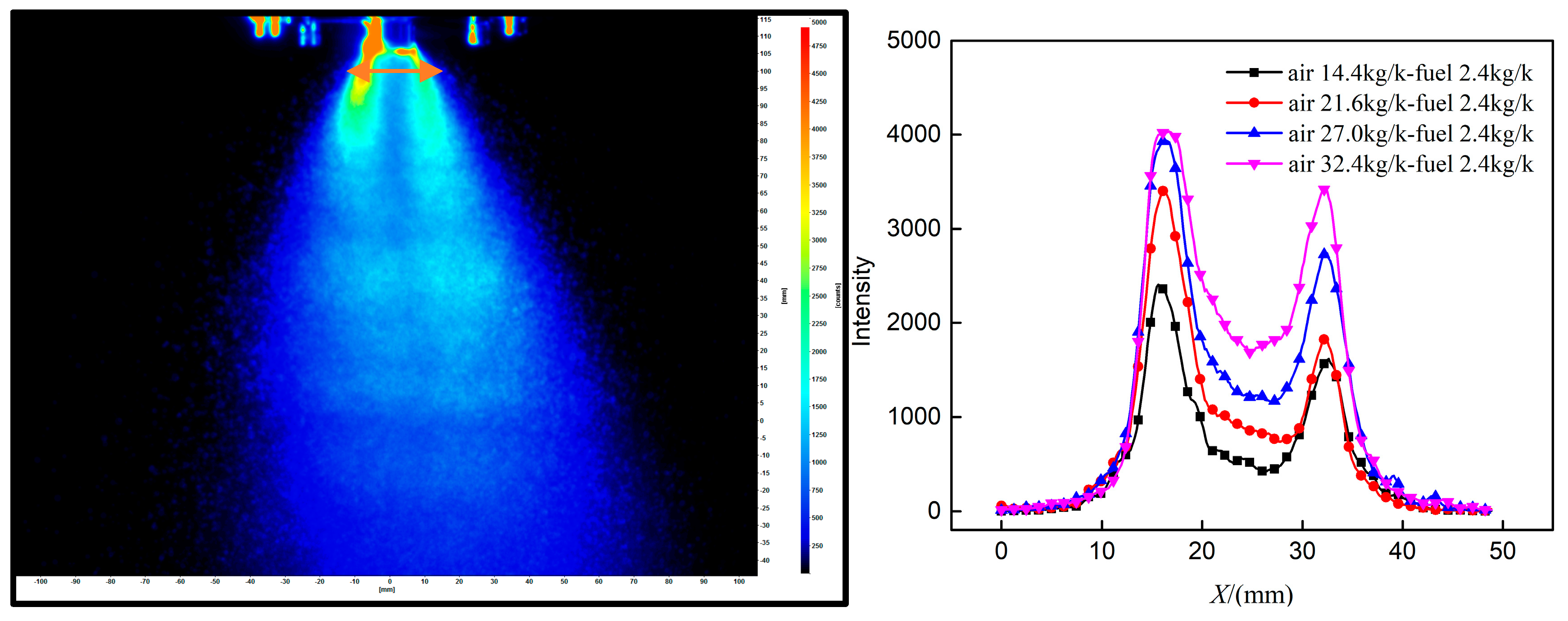
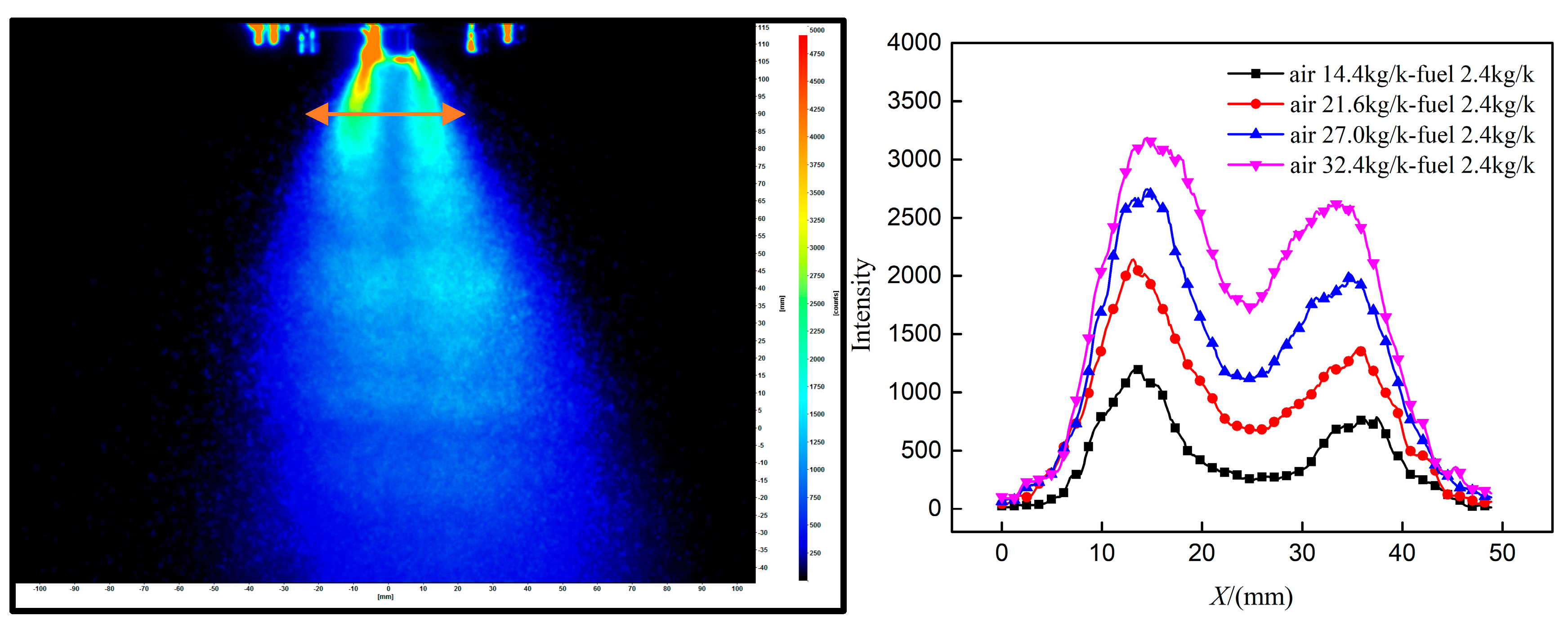


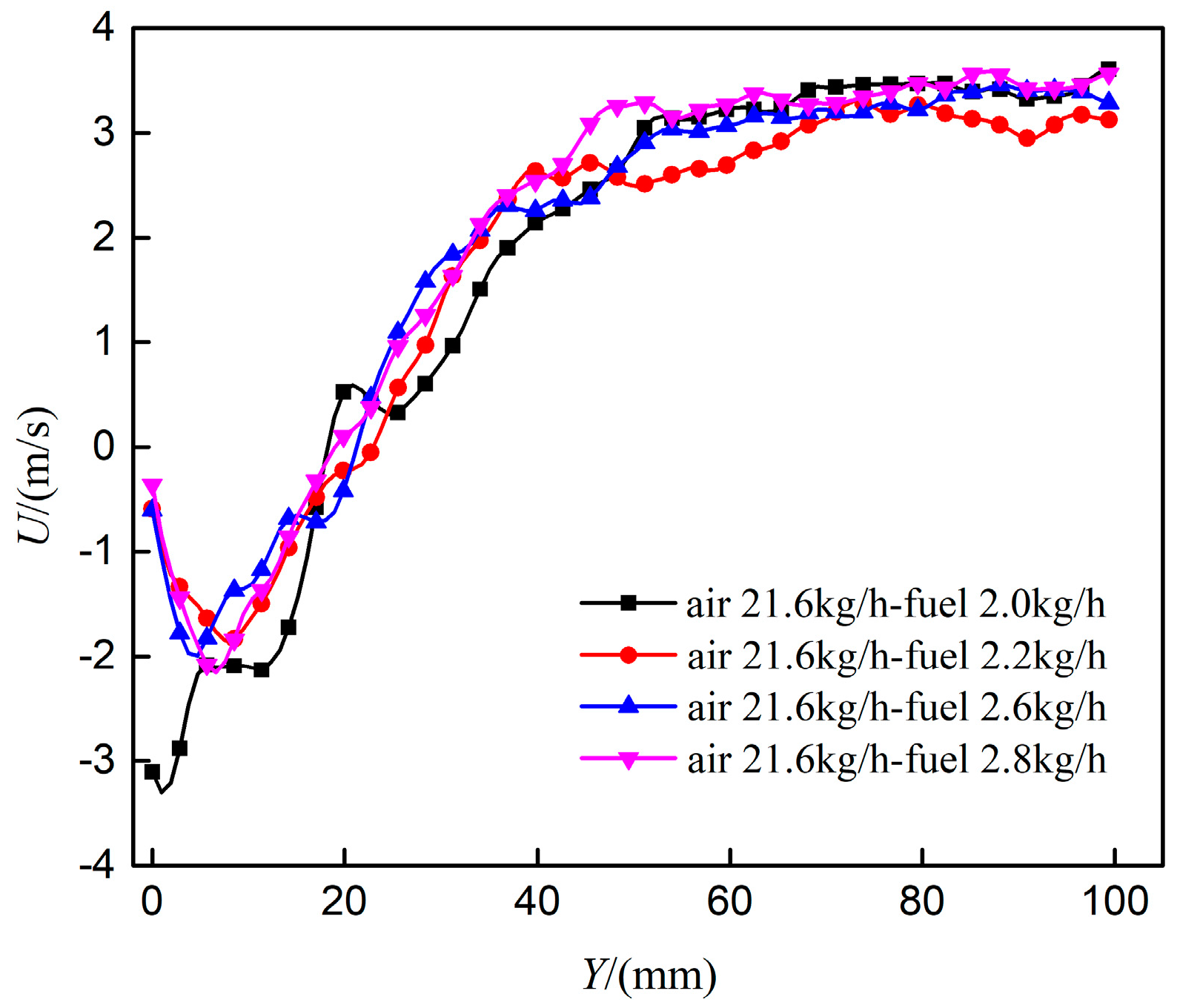
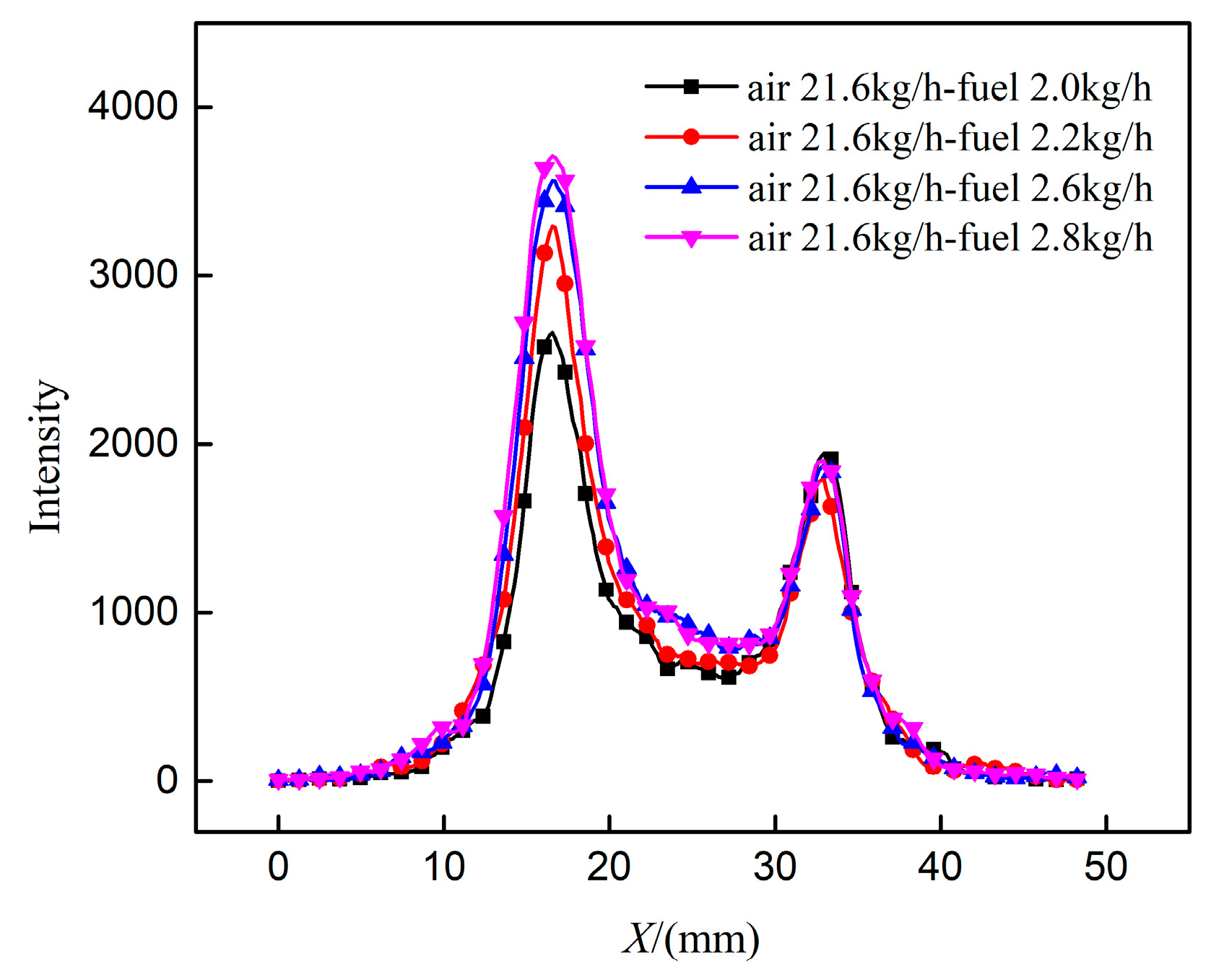

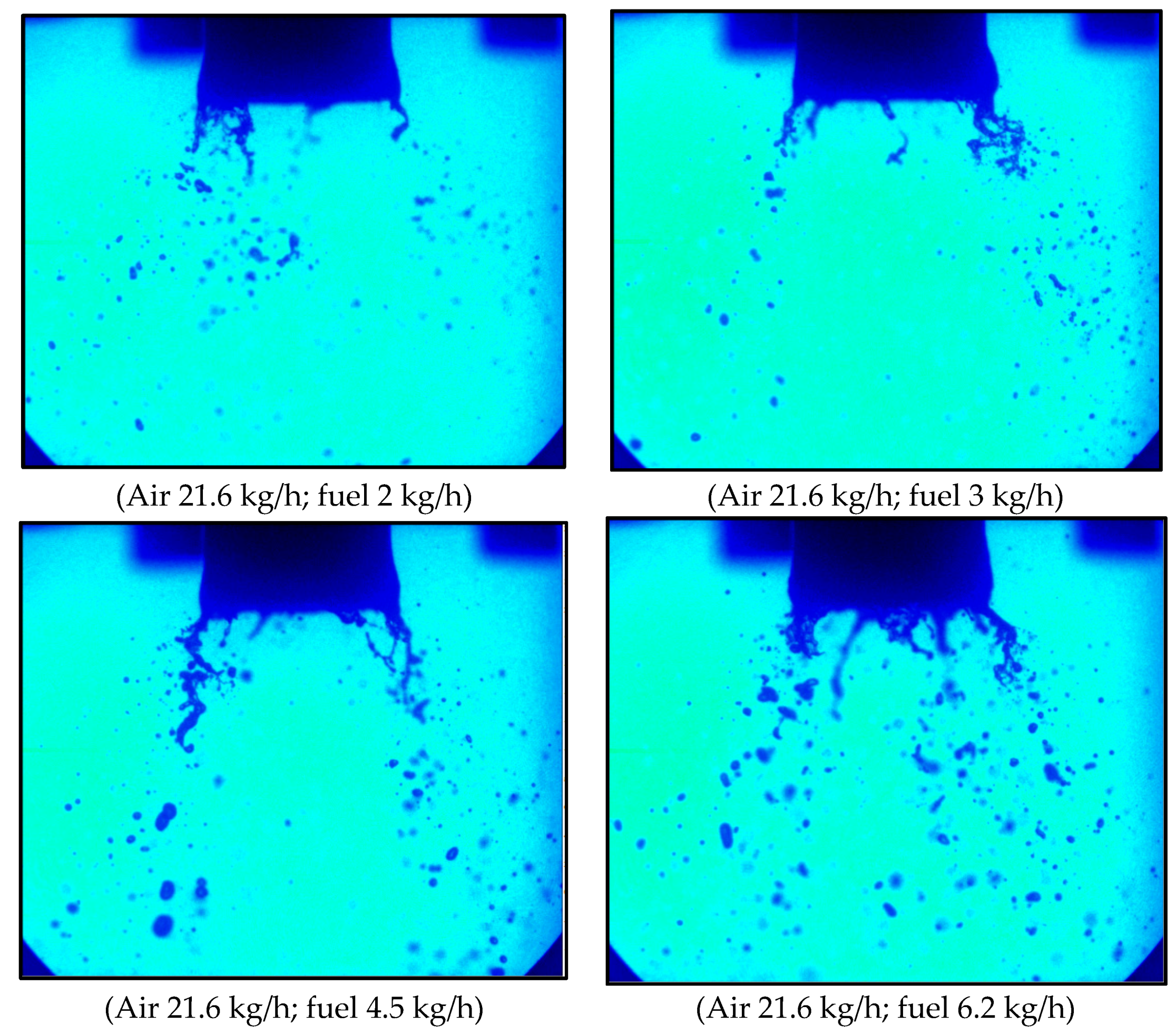
| Case | ma/(kg/h) | mf/(kg/h) | T/(°C) |
|---|---|---|---|
| Atomizer | 0 | 2.4 | 10 |
| A | 21.6 | 2.4 | 10 |
| B | 21.6 | 2.4 | 10 |
| C | 54 | 2.4 | 10 |
| D | 54 | 2.4 | 10 |
| Case | ma/(kg/h) | mf/(kg/h) | T/(°C) |
|---|---|---|---|
| Atomizer | 0 | 4.5 | 10 |
| B | 18 | 4.5 | 10 |
| C | 45 | 4.5 | 10 |
| D | 45 | 4.5 | 10 |
| Case | ma/(kg/h) | mf/(kg/h) | T/(°C) |
|---|---|---|---|
| A | 18 | 2.4 | −10 |
| A | 18 | 2.4 | −5 |
| A | 18 | 2.4 | 0 |
| A | 18 | 2.4 | 5 |
| A | 18 | 2.4 | 10 |
| A | 18 | 2.4 | 15 |
| A | 18 | 2.4 | 20 |
| Case | ma/(kg/h) | mf/(kg/h) | T/(°C) |
|---|---|---|---|
| B | 18 | 4.5 | −10 |
| B | 18 | 4.5 | 0 |
| B | 18 | 4.5 | 10 |
| B | 18 | 4.5 | 20 |
© 2019 by the authors. Licensee MDPI, Basel, Switzerland. This article is an open access article distributed under the terms and conditions of the Creative Commons Attribution (CC BY) license (http://creativecommons.org/licenses/by/4.0/).
Share and Cite
Fan, X.; Liu, C.; Mu, Y.; Wang, K.; Wang, Y.; Xu, G. Experimental Investigations of Flow Field and Atomization Field Characteristics of Pre-Filming Air-Blast Atomizers. Energies 2019, 12, 2800. https://doi.org/10.3390/en12142800
Fan X, Liu C, Mu Y, Wang K, Wang Y, Xu G. Experimental Investigations of Flow Field and Atomization Field Characteristics of Pre-Filming Air-Blast Atomizers. Energies. 2019; 12(14):2800. https://doi.org/10.3390/en12142800
Chicago/Turabian StyleFan, Xiongjie, Cunxi Liu, Yong Mu, Kaixing Wang, Yulan Wang, and Gang Xu. 2019. "Experimental Investigations of Flow Field and Atomization Field Characteristics of Pre-Filming Air-Blast Atomizers" Energies 12, no. 14: 2800. https://doi.org/10.3390/en12142800



